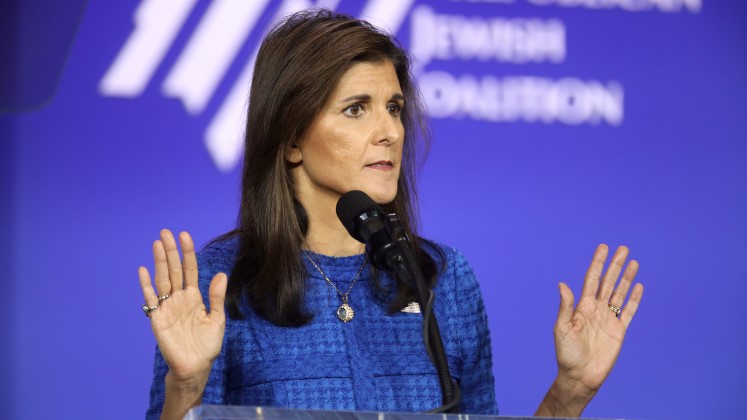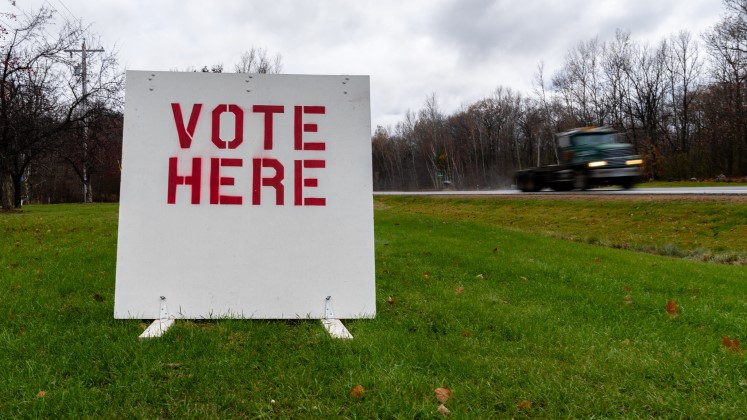 This month, Democrats across the country will begin to select their preferred candidate for the presidential nomination – a candidate who is near certain to be the incumbent president, Joe Biden. Peter Finn documents the changes between the 2020 cycle and next year’s contests, writing that the revised presidential 2024 primary calendar is the outcome of compromises, tensions, and political realities.
This month, Democrats across the country will begin to select their preferred candidate for the presidential nomination – a candidate who is near certain to be the incumbent president, Joe Biden. Peter Finn documents the changes between the 2020 cycle and next year’s contests, writing that the revised presidential 2024 primary calendar is the outcome of compromises, tensions, and political realities.
- This article is part of ‘The 2024 Elections’ series curated by Peter Finn (Kingston University). Ahead of the 2024 election, this series is exploring US elections at the state and national level. If you are interested in contributing to the series, contact Peter Finn (p.finn@kingston.ac.uk).
The 2024 Democratic Party presidential primary calendar begins with the beginning of a mail-in caucus in Iowa on January 12, 2024. The calendar has important differences to the 2020 cycle, which represent compromises and tensions between the national and state level parties, as well as reflecting broader political realities. Before the primaries kick off next week, it’s useful to reflect not only on how it will unfold over the coming months, and how this compares to 2020’s schedule, but also how this year’s calendar emerged.
2020 Democratic Party Calendar
As Table 1 shows, the 2020 Democratic Party primary process began on February 3, 2020, with the Iowa Caucus, with primaries in New Hampshire and South Carolina, and a caucus in Nevada, all taking place ahead of Super Tuesday on March 5.
Iowa and New Hampshire have generally been the first states in the primary process for both parties since the modern primary system emerged in the 1970s. However, there was controversy around the Iowa Democratic Caucus in 2020, as issues with the technology used to report results led to multiple embarrassing news cycles for the state party as the publication of results was delayed.
Table 1 – 2020 Democratic Party Early State Primary Calendar
| Date | State or Territory | Primary or Caucus |
|---|---|---|
| February 3 | Iowa | Caucus |
| February 11 | New Hampshire | Primary |
| February 22 | Nevada | Caucus |
| February 28 | South Carolina | Primary |
| March 3 | Super Tuesday (Alabama, American Samoa, Arkansas, California, Colorado, Democrats Abroad, Maine, Massachusetts, Minnesota, North Carolina, Oklahoma, Tennessee, Texas, Utah, Vermont, Virginia) | ● Mainly primaries ● Caucus in American Samoa |
Source: 270towin.com
Initial 2024 National Party Proposal
This time last year, the national Democratic Party made a number of proposals to alter next year’s primary calendar. As Table 2 outlines, the national party proposal envisaged a February 3 start in South Carolina, followed by New Hampshire, Georgia, and Michigan throughout the rest of February, with Super Tuesday on March 5. This timetable would entirely remove Iowa from the pre-Super Tuesday states and strip New Hampshire of its first in the nation primary status.
The national Democratic Party also proposed moving away from causes entirely in favour of primaries. As a December 2022 letter from President Biden to the Democratic Rules and Bylaws Committee explained, this change rested on the argument that as ‘a party dedicated to ensuring participation by all voters and for removing barriers to political participation’ it could not support caucuses that required ‘voters to choose in public, to spend significant amounts of time to caucus, disadvantaging hourly workers and anyone who does not have the flexibility to go to a set location at a set time’.
Table 2 – Initial National Democratic Party 2024 Early State Primary Calendar Proposal
| Date | State or Territory | Primary or Caucus |
|---|---|---|
| February 3 | South Carolina | Primary |
| February 6 | New Hampshire and Nevada | Primary |
| February 13 | Georgia | Primary |
| February 27 | Michigan | Primary |
| March 5 | Super Tuesday | Proposal to have all states run primaries |
Actual 2024 Democratic Party Primary Calendar
Table 3 shows that next year will be a hybrid between the 2020 calendar and the initial proposal of the national Democratic Party. Iowa (just about) still begins the 2024 presidential selection process on January 12, but with a mail-in caucus that runs until March, and results announced on Super Tuesday, rather than an in-person caucus. There are also caucuses in Wyoming, Idaho, Guam, and the Virgin Islands.

“Des Moines Precinct 61” by Phil Roeder is licensed under CC BY 2.0
New Hampshire, meanwhile, is still holding the first primary, but against the express wishes of the national party. As a result, Biden, the most likely winner of the 2024 Democratic nomination, is not on the ballot in The Granite State. Another difference from the proposed calendar is that Georgia is not included as a pre-Super Tuesday state and is instead occurring alongside the Republican Party Primary on March 12.
Table 3 – Actual Democratic Party 2024 Calendar
| Date | State or Territory | Primary or Caucus |
|---|---|---|
| January 12-March 5 | Iowa | ● Mail in-caucus ● January 12: Mail in Presidential Preferences cards sent out ● January 15: In-person caucuses, but only for state level posts. ● February 19: Last day to request mail-in Presidential Preferences card ● March 5: Presidential Preferences result announced |
| January 23 | New Hampshire | ● Primary ● President Joe Biden not on ballot |
| February 3 | South Carolina | Primary |
| February 6 | Nevada | Primary |
| February 27 | Michigan | Primary |
| March 5 | Super Tuesday (Alabama, American Samoa, Arkansas, California, Colorado, Iowa (see also above), Maine, Massachusetts, Minnesota, North Carolina, Oklahoma, Tennessee, Texas, Utah, Vermont, Virginia) | ● Mainly primaries ● Caucuses in American Samoa and Iowa |
Sources: Iowa Democrats & 270towin.com
Compromise, Tension, and Political Reality
Interestingly, Table 3 illustrates two different approaches by state level parties to the changes proposed by the national Democratic Party, as well as reflecting political reality.
Compromises: Though the Iowa Democratic Party initially rebuffed the changes proposed by the national party, it eventually came to an accommodation that has ceded having an in-person caucus that provides the first results of the Democratic Presidential Primary to maintain the status of being the state that formally starts the presidential candidate nomination process. The national party, meanwhile, has given enough ground to allow the Iowa state party to say (just about plausibly) that they are holding a mail-in caucus despite the fact they ‘are essentially shifting to a party-run primary’, while diluting the influence of the Iowa results because they will now form just a small part of those released on Super Tuesday.
Tension: Tensions between national and state level politics are a prominent feature of the US political system, and these have been playing out in the wrangling over the Democratic Party calendar. Reflecting a state law that requires it to hold the first presidential primary, the Democratic Party in New Hampshire chose to hold the line that it should hold the first primary. As a result, Biden declined to take part in the Granite State Primary, with his Campaign Manager Julie Chavez Rodriguez stating that ‘while the president wishes to participate in the primary, he is obligated to comply’ with national party rules. Intriguingly, there is a write-in campaign among Biden supporters designed to circumvent the fact he is not on the New Hampshire ballot.
Political Realities: In Georgia, meanwhile, the national Democratic Party plan fell afoul of the political realities of a state where the Republican Secretary of State Brad Raffensperger was able to block a plan that would have decoupled the Democratic and Republican primaries.
Looking on to 2028
One interesting facet of the nomination process for the Democratic nominee for 2024 is that, bar Biden becoming incapacitated, passing away or some other unforeseeable event, it is very likely the incumbent President will be the nominee. As such, in the long run the main benefit of understanding the journey from the 2020 calendar to the 2024 calendar may be as a prelude to the jockeying that will, one imagines, occur around the 2028 calendar, which will (as long as Biden actually becomes the 2024 nominee) be competitive and thus of much more consequence. Indeed, even as the proposal to bring Georgia closer to the start of the calendar stalled, Minyon Moore of the Rules and Bylaws Committee said that ‘a foundation has been laid’ for changes in the next cycle.
Please read our comments policy before commenting.
Note: This article gives the views of the author, and not the position of USAPP – American Politics and Policy, nor the London School of Economics.
Shortened URL for this post: https://bit.ly/3NQidij






